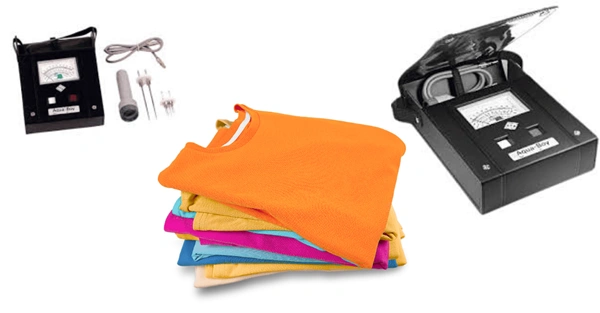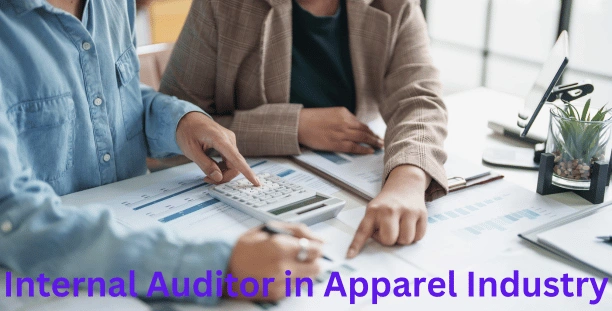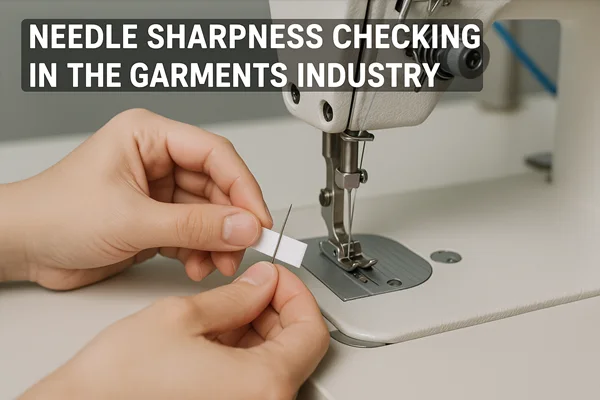Process Flow Chart of Quality Control in Sewing Section
Sewing is a systematic process in garment manufacturing. If we can control the quality of sewing, 75% of garment defects will be reduced. So to control garment quality, we need to control sewing. Sewing quality control should be strong, and quality control should be in needlepoint. In this article, we present the Process Flow Chart of Quality Control in the Sewing Section.
Quality Control in the sewing department occupies a vital place in the garment manufacturing process. It assures that the manufactured products conform to design specifications and function and meet customer expectations. A well-organized and managed quality control process can result in the minimization of defect generation, waste, and enhanced efficiency. The basic tools of sewing quality control are an approved trim card/ swatch card, buyer buyer-approved sample, and the specification sheet. Quality inspectors inspect the 100% sewing parts in the different areas. These are all part of the sewing quality control SOP.

Process Flow Chart of Quality Control in Sewing Section in the Garments Industry:
Sewing Quality Control Flow Chart of Bottom (Pant)
Front part↔ 100% quality inspection
↓
Back part↔100% quality inspection
↓
Assembly↔100% quality inspection
↓
Waistband↔100% quality inspection
↓
Output↔100% quality inspection
↓
Output measurement↔100% quality inspection
↓
Lot audit ↔ AQL system
Sewing Quality Control Flow chart of Tops(Shirts)
Front part↔100% quality inspection
↓
Small parts↔100% quality inspection
↓
Collar join top stitch↔100% quality inspection
↓
Side seam↔100% quality inspection
↓
Output↔100% quality inspection
↓
Output measurement↔100% quality inspection
↓
Lot Audit↔ AQL system
Tops (shirt) Garments checking points in Sewing
Front and Small part
- Front yoke
- Flap
- Box Pleat
- Button pleat
- Shade, bundle and Cut accuracy
Small part
- Collar topstitch
- Band Ruling
- Cuff Ruling
- Back yoke topstitch, Dirt and box pleat
- Main Label joint
- Care label joint
Collar Topstitch
- Collar join
- Collar top stc
- Sleeve joint
- Sleeve top stc
- Sleeve placket join top stc
- Sleeve gamble
Armhole Topstitch
- Sleeve joint
- Armhole top stitch
- Care Label
Output
- Side seam and side top stitch
- Cuff join top STC
- Button label joint
- Cuff pleat position as per PDM and seal
- Bottom hem Top stc
- Size label and Care label
Bottom Garments (pants) checking points in sewing
Front Part
- Single fly tension
- Zipper
- Fly tension
- Pkt Ruling
- Front Rise
- Shade, bundle and Cut accuracy
Back Part
- Back pocket Ruling
- Back pocket
- Back yoke
- Back Rise
Assembly
- Inseam Topstitch
- Side cord stitch/ side overlock
Kansai
Waistband check and measurement
Output
- Mouth close
- Bottom hem
- Loop
- Key points measurements
Monitoring Stitching Lines:
- Quality of Stitching: Right stitch length, tension, and seam strength.
- Seam Allowance: As per specification (e.g., 1cm or 1.5cm).
- Alignment Checks: Pockets, collars, cuffs, and plackets must be symmetrical.
- Pressing: No wrinkles, shine marks, or burns.
End-of-Line Inspection (Pre-Final QC)
At the end of sewing, all garments are subjected to a thorough inspection before they head for finishing.
- Visual Defects: Loose threads, skipped stitches, misaligned parts.
- Functional Checks: Buttons, zippers, snaps, and elastic must work properly.
- Measurement Check: Compare against size specs (length, width, sleeve, etc.).
Defective pieces are rejected or sent for rework.
Classification of Defects and Reporting
Category of defects to be prepared for corrective action.
- Critical Defects: Safety hazards or major defects (e.g., zipper broken).
- Major Defects: Function affected (e.g., seams are open).
- Minor Defects: Cosmetic (e.g., misaligned slightly).
A QC report goes to the proper personnel so as to inform the production managers.
Conclusion:
This structured Quality Control Process Flow in the sewing section would guarantee the highest quality in the production of garments. Controls in the process, random sampling, classification of defects, and corrective actions would minimize waste and improve efficiency and customer satisfaction by better control in manufacturing.



